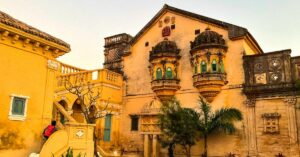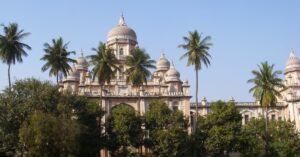#Travel Tales: Why A Trip to Nako, Tabo and Kaza is the Best Himalayan Adventure You Will Ever Have
For those who haven't witnessed the sheer beauty of Himachal's Spiti Valley, here are a few breathtaking glimpses of the strikingly beautiful villages of Nako, Tabo and Kaza.
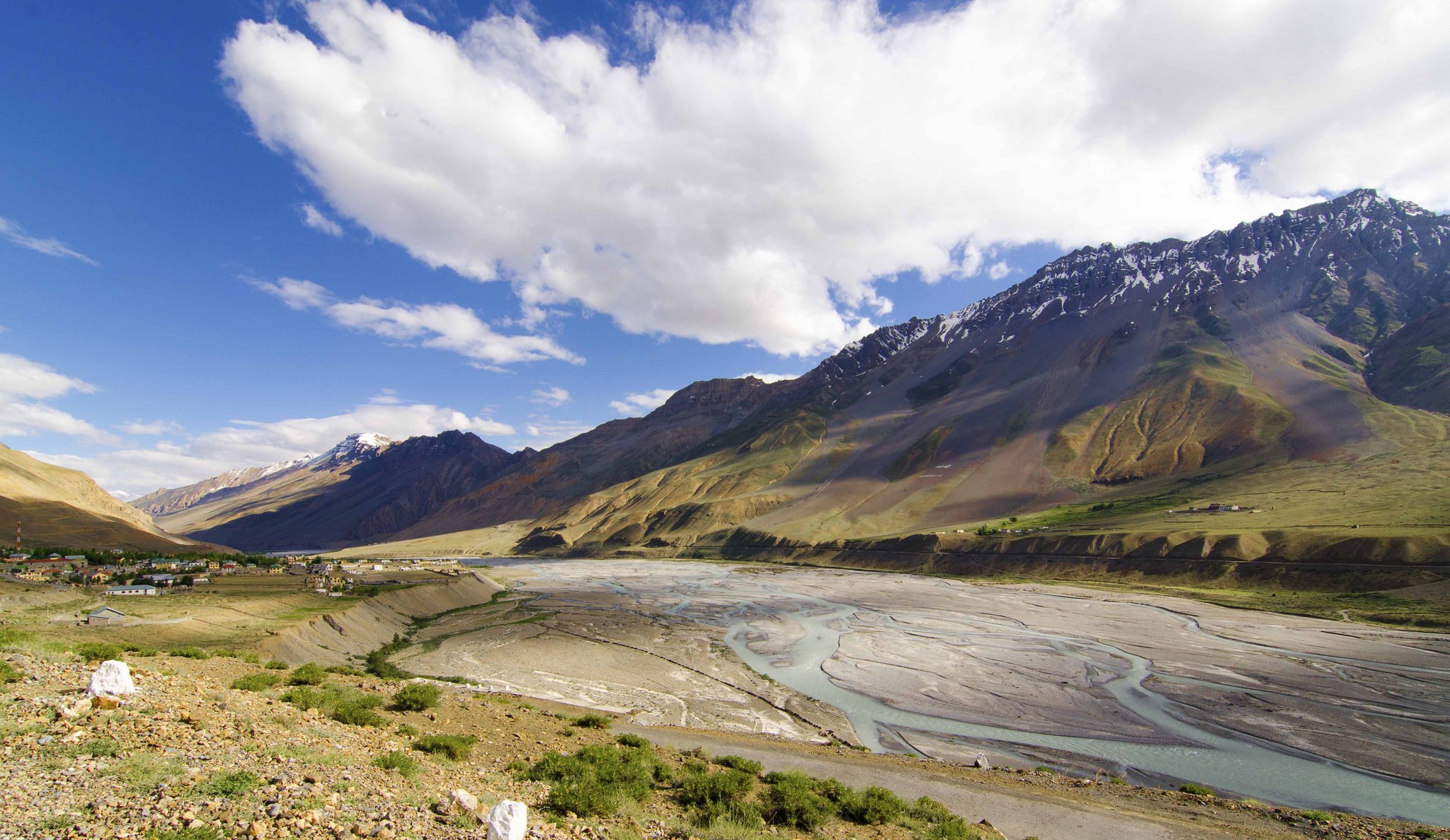
Years ago, Rudyard Kipling described his visit to Spiti thus: “At last entered a world within a world – a valley of leagues where the high hills were fashioned of the mere rubble and refuse from off the knees of the mountains… Surely the Gods live here.” And all of it holds true even in the present day.
Tucked away in the interiors of the Trans-Himalayan belt of Himachal Pradesh, the spellbinding Spiti valley is a cold desert, a heady mix of austere barren mountains, unexpected bursts of green fields and deep gorges formed by the fierce Spiti River.

Photo Source
The proximity of Spiti to Tibet also means there is more than a fair bit of Buddhist influence in the region. The valley’s moon-like landscape is dotted with several important gompas (monasteries) that are a favourite with the Dalai Lama himself. Preserved inside them are ancient treasures of art, scriptures and statues that date back to the beginning of Buddhism.
The rugged landscape and rustic surroundings around the secluded villages on the Nako-Tabo-Kaza circuit in Spiti, which rest at an average height of 12,500 feet above sea level, are a dream destination for those seeking adventure on an offbeat frontier holiday.
For those who haven’t witnessed the sheer beauty of this ‘world within a world’ firsthand, here are a few breathtaking glimpses of the strikingly beautiful villages of Nako, Tabo and Kaza.
1. The Silvery Spiti River

Photo Source
The quietly flowing Spiti river nurtures this barren yet beautiful valley of Himachal Pradesh. After the winter snow melts, the banks of the river come to life, transforming into lush grassy grazing grounds for the yaks, sheep and goats that form the lifeline of the villagers; the milk is used by the families to make butter and cheese, the wool is used to make tents and weave blankets, while the meat is a delicacy saved for festive occasions.
2. The Pristine Lakeside Village – Nako
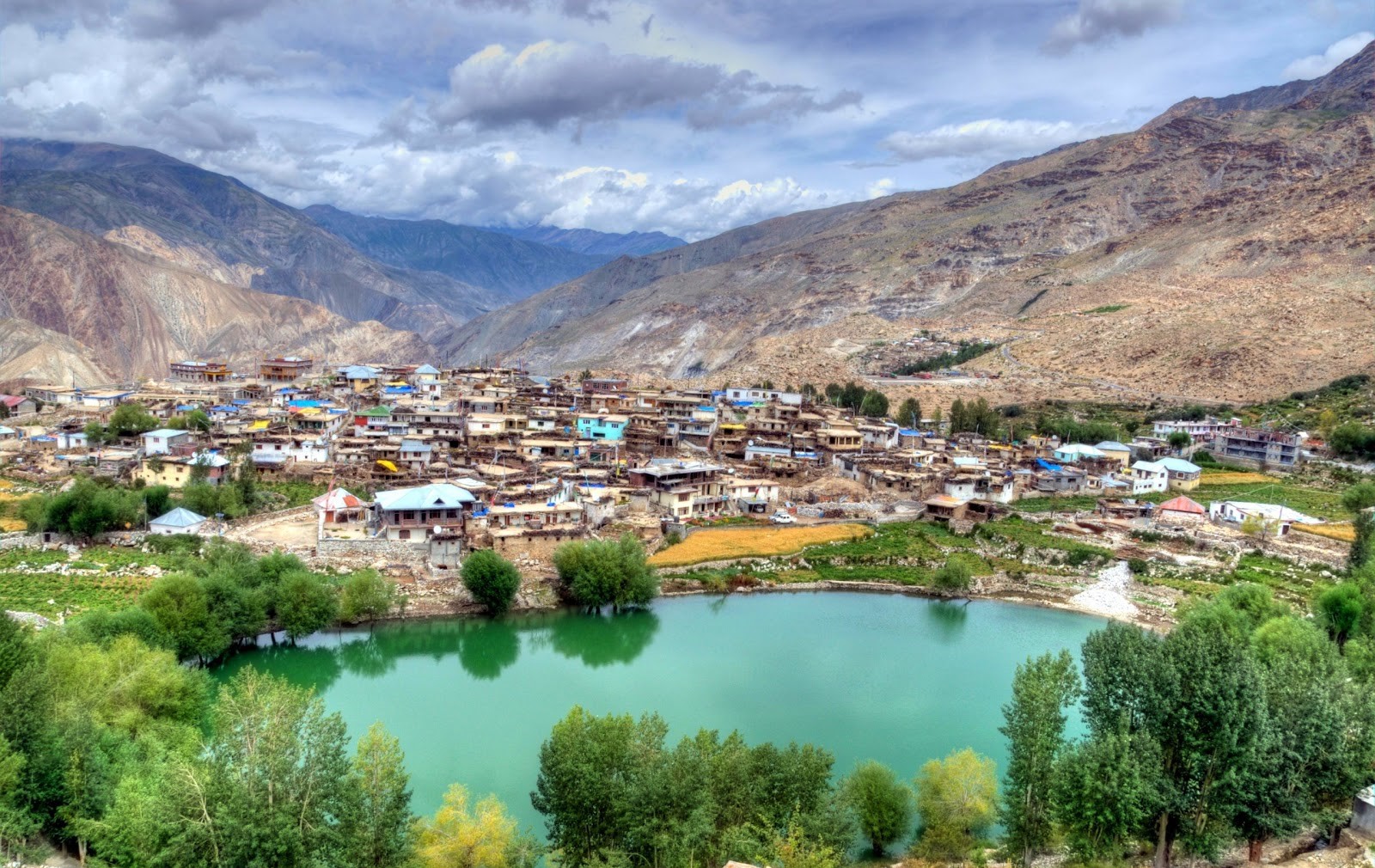
Photo Source
The peaceful and picturesque Nako village is perched on the banks of the Nako lake, illuminated in shimmering blues and greens by the sun bouncing off the surrounding snowy mountain peaks. The boundless azure skies above and the empty expanse around join hands with the lake to deliver a sense of openness that makes Nako a traveller’s delight.
3. Snow Shrouded Nako in Winter
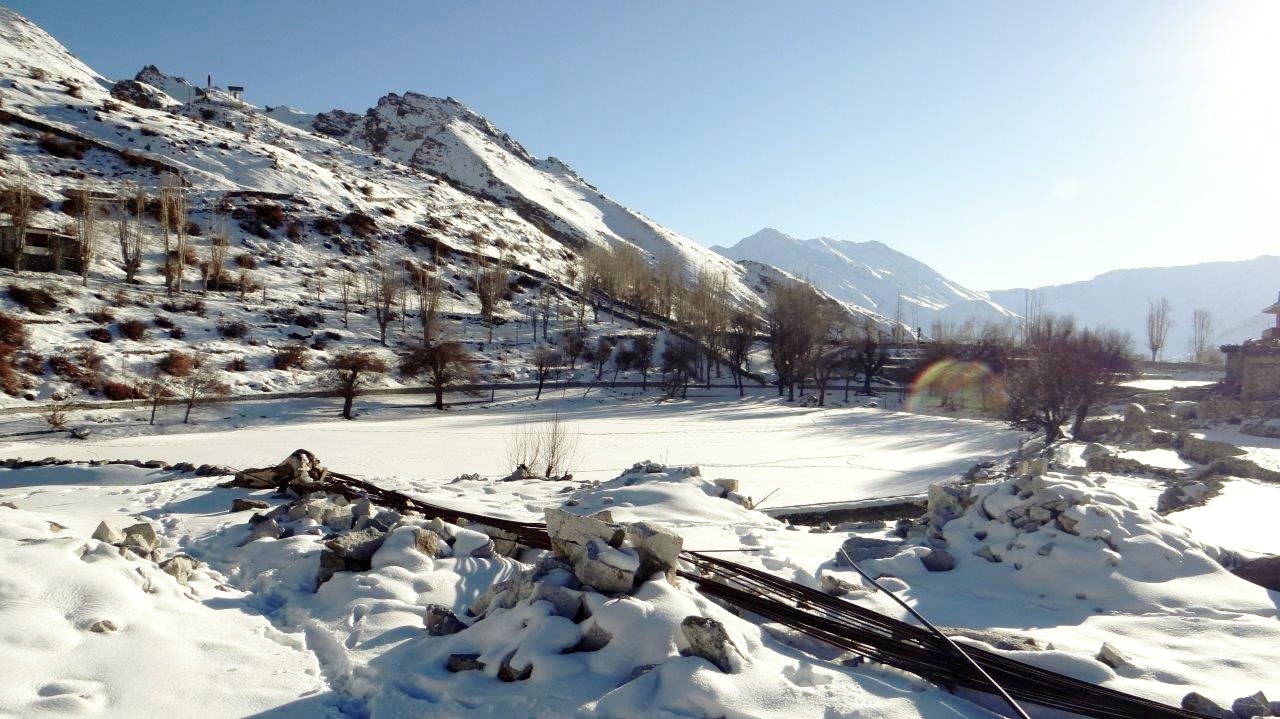
Photo Source
While Nako is beautiful in any month of the year, winter is completely different and surreal. Reaching Nako in winter is itself a task. Snow starts falling in Spiti by the end of October, gradually closing the Rohtang and Kunzum passes and making it extremely difficult to reach Nako.
4. The Mesmerising Monastery at Tabo

Photo Source
Often referred to as the ‘Ajanta of the Himalayas’, the Tabo Chos-Khor Monastery was founded more than a thousand years ago in 996 A.D. Untouched by the trials and tribulations of humanity, it has preserved its glorious heritage, traditions and culture of Buddhism through the centuries. Standing serenely in the cold and rocky Tabo Valley, this ancient monastery shows amazing architectural integrity and spiritual richness.
4. Spectacular Murals Inside the Tabo Monastery

Photo Source
The Tabo monastery is famous for its exquisite murals and stucco sculptures, described by His Holiness, the Dalai Lama, as ‘a delightful expression of the Indo-Tibetan collaboration in spreading Buddhist culture’. The contrast between the simple mud brick exterior and the resplendent ornate interiors of the Tabo monastery is spectacularly striking and a must see for every visitor.
5. Cave Shrines (Chortens) at Tabo
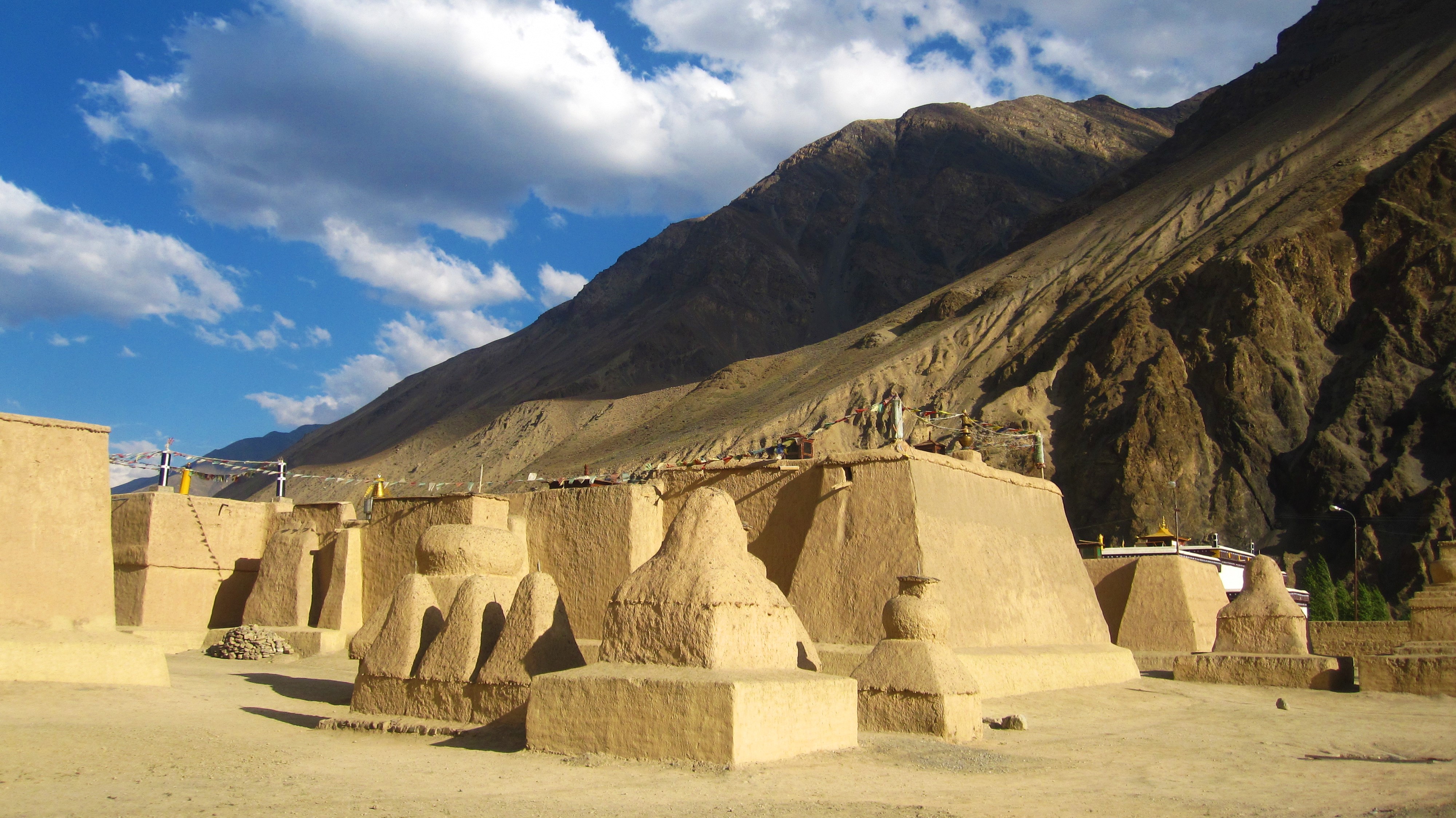
Photo Source
Above the Tabo monastery, there are caves and cliff like structures (chortens) that are used by the monks for meditation. The monastery complex includes 9 temples, 23 cave shrines, a monks’ chamber and an extension that houses the nuns’ chamber – they all have different names on the basis of their use.This historically significant site is protected by the Archaeological Survey of India (ASI).
6. The Ancient Capital of Spiti-Dhanker
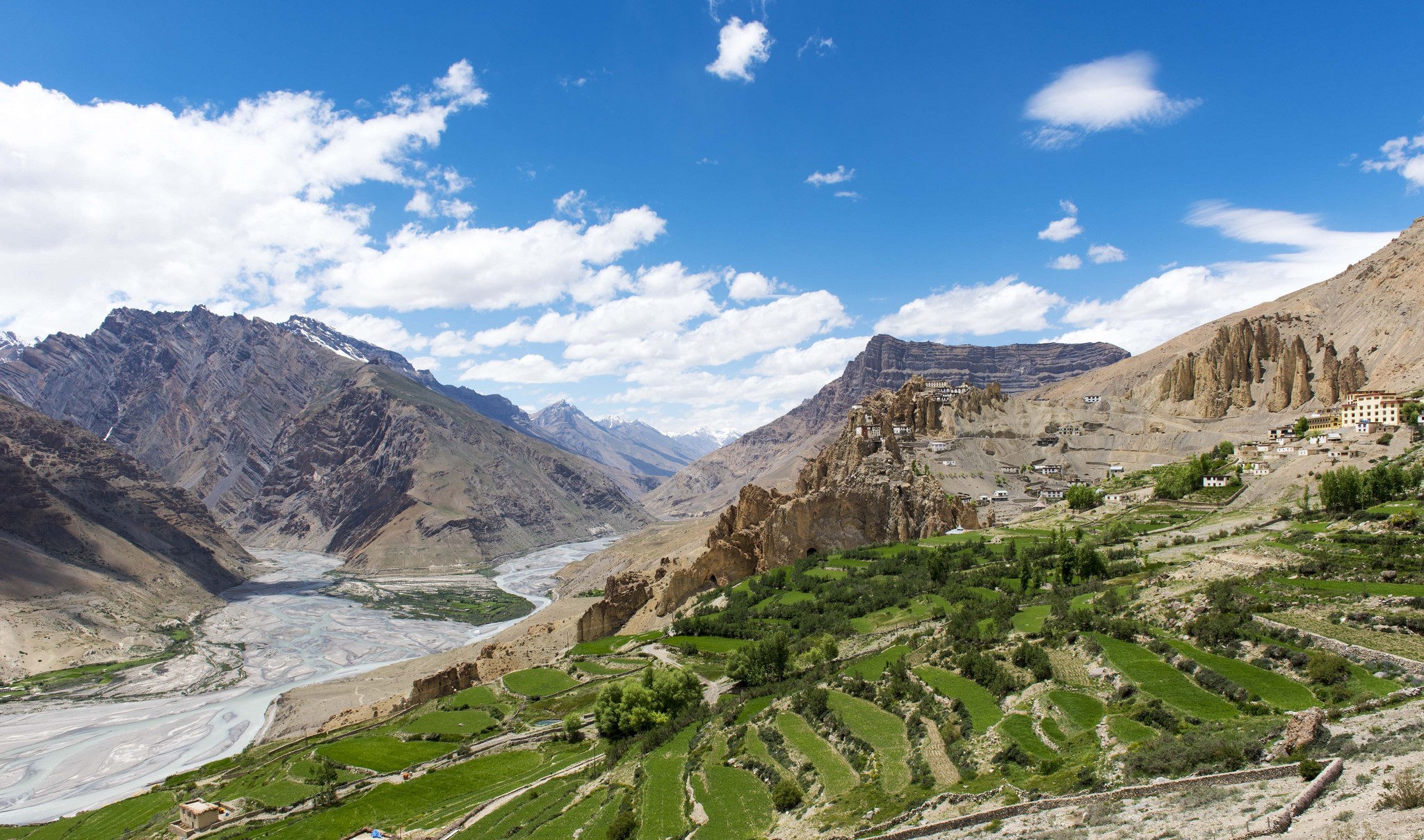
Photo Source
Located between Tabo and Kaza, at a height of close to 13,000 feet, the Dhankar village is the erstwhile capital of the Spiti Valley kingdom. During the 17th century, it was the seat of the early rulers of Spiti, the Nonos. The name Dhankar literally means ‘a place in the mountains unreachable for strangers.’ Surrounded by nothing but plenty of barren mountains, Dhankar is the place to be for those seeking true tranquility.
7. Living on the Edge – The View From the Dhankar Monastery
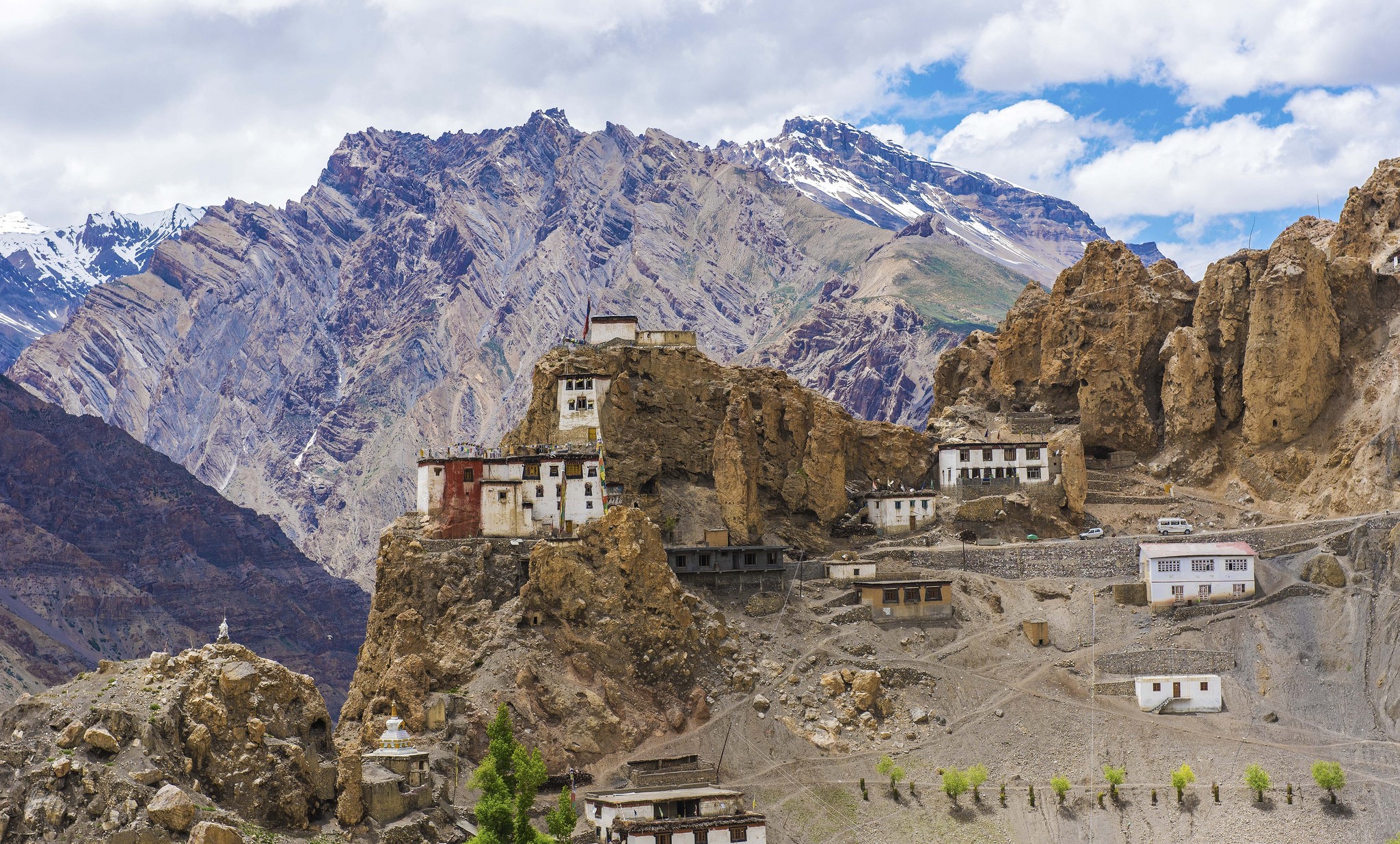
Photo Source
At the top of the village, sits the famous Dhankar gompa, an ancient monastery belonging to the Gelugpa sect of Buddhism. The view from the Dhankar monastery is awe inspiring – the complex is built on a high spur overlooking the confluence of the Spiti and Pin rivers. An hour of breathless hiking from Dhankar monastery on a narrow trail takes one to the top of the hill, where one is greeted with a splendid view of Dhankar lake. Crystal clear water, snow capped hills as a backdrop, and fluffy clouds reflecting in the lake – this is a treat for any photographer!
You May Like: The Stark Beauty of Dras, India’s Coldest Inhabited Place, Is Mysteriously Alluring
8. The Fossil Village of Spiti – Langza

Photo Source
Nestled between the mountains, in a bowl shaped area in the Spiti Valley, is a small remote village named Langza. Travellers to Langza are greeted by a giant statue of a meditating Buddha, at the head of the village. Langza is also well known for its rich fossil reserves. Millions of years ago, Spiti lay submerged under the Tethys sea, which is why fossils of sea life can easily be found scattered close to the village. Regular fossil excursions for visitors are organized for a unique insight into the history of the Himalayas.
9. On the Way to Kaza

Photo Source
Travellers making their way to Spiti’s administrative hub, Kaza, get to enjoy numerous trekking routes, and open spaces and camping sites that promise an endless supply of solitude and scenic beauty. The nights are equally magical with unforgettable views of a velvety star-lit sky.
10. Kaza – The Base for Kibber and Kye Monastery
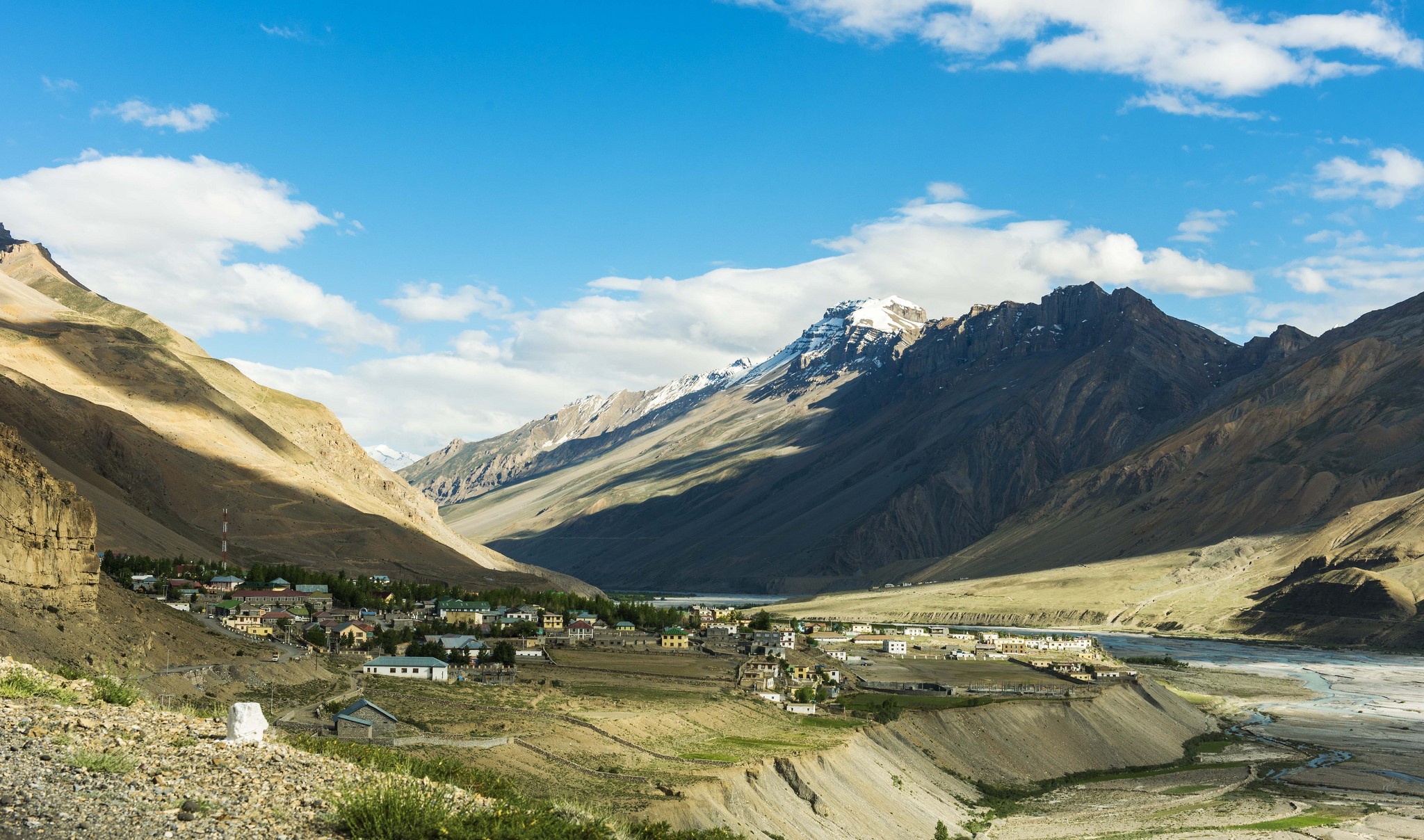
Photo Source
Perched at an altitude of close to 12,000 feet, Kaza is one of those places were a traveller would want to simply sit and enjoy the stunning view and all-encompassing silence for hours. The remote village is home to the 14th century Tangyud Gompa, which is built beautifully in the form of an ancient fortified castle. While the famous Kye monastery is 12 kms away from Kaza, Kibber (the highest motorable village in the world) is 7 kms away.
11. A Blissfully Untouched Village Life
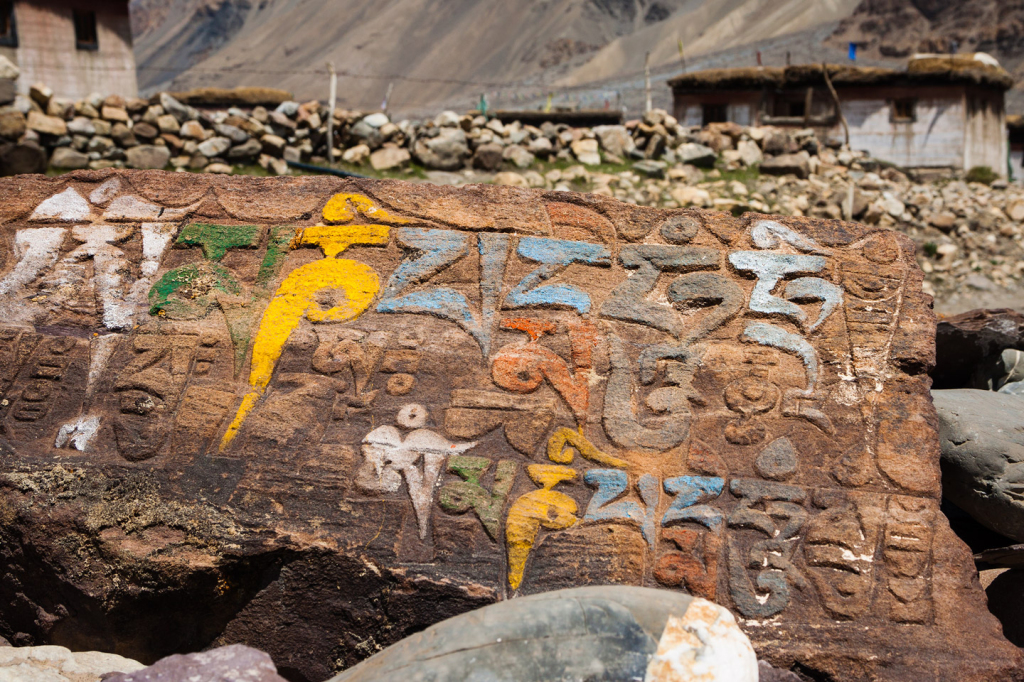
Photo Source
The village homes in Spiti are constructed in the typical Himachali style with timber bonded stone. The rooftops of the houses are laden with fodder saved for the winter months. The villages, with their serene surroundings, Tibetan prayer stones and wandering, peaceful-looking yaks are a sight for sore eyes. If lucky, travellers can also attend a performance of the ancient wedding dance of Spiti, khaar.
12. Cheerful, Good-Natured and Sociable: The Locals of Spiti
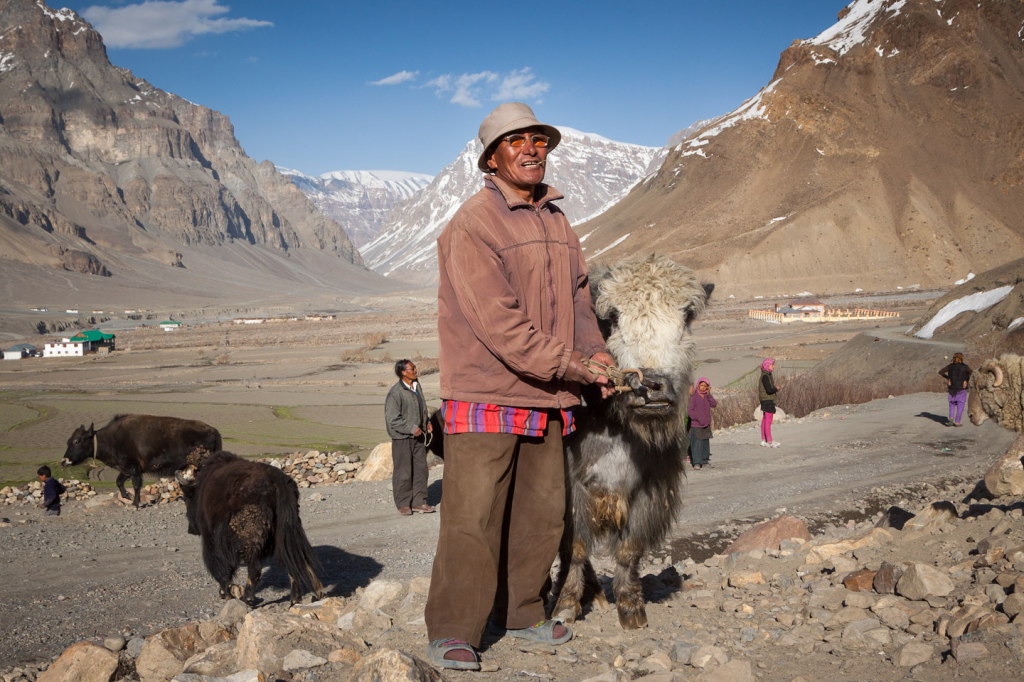
Photo Source
The villages of Spiti, though remote, are home to some of the kindest, friendliest people in India, and very welcoming of travellers. Braving harsh terrain and extreme weather, the locals work hard relentlessly to sustain their families. Yet, they are always cheerful and friendly and welcoming, the serenity of the surroundings reflecting in their faces.
13. Home to Hardy and Hardworking Women
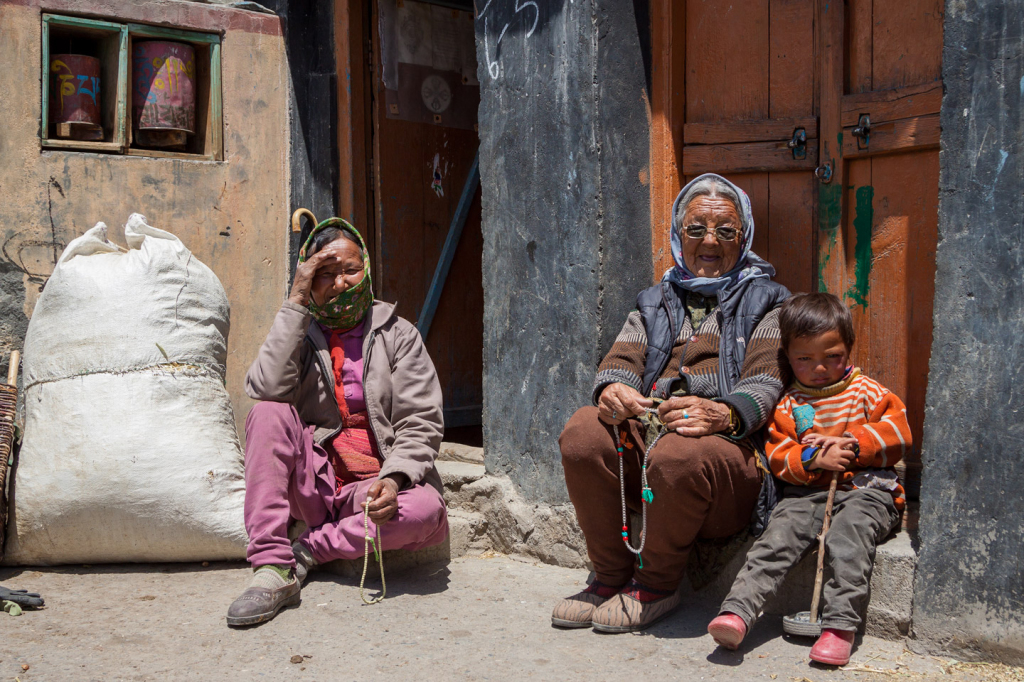
Photo Source
After the snow melts on the high peaks around the villages, the hard working women of Spiti start their annual summer routine. The livestock is taken to the grasslands for grazing before the women get busy cultivating barley, potatoes and green peas. Travellers in Spiti are often welcomed warmly and offered cups of steaming tea, local brews and freshly cooked food by these ever-cheerful women.
14. The Sweet, Sun-kissed Children of Spiti
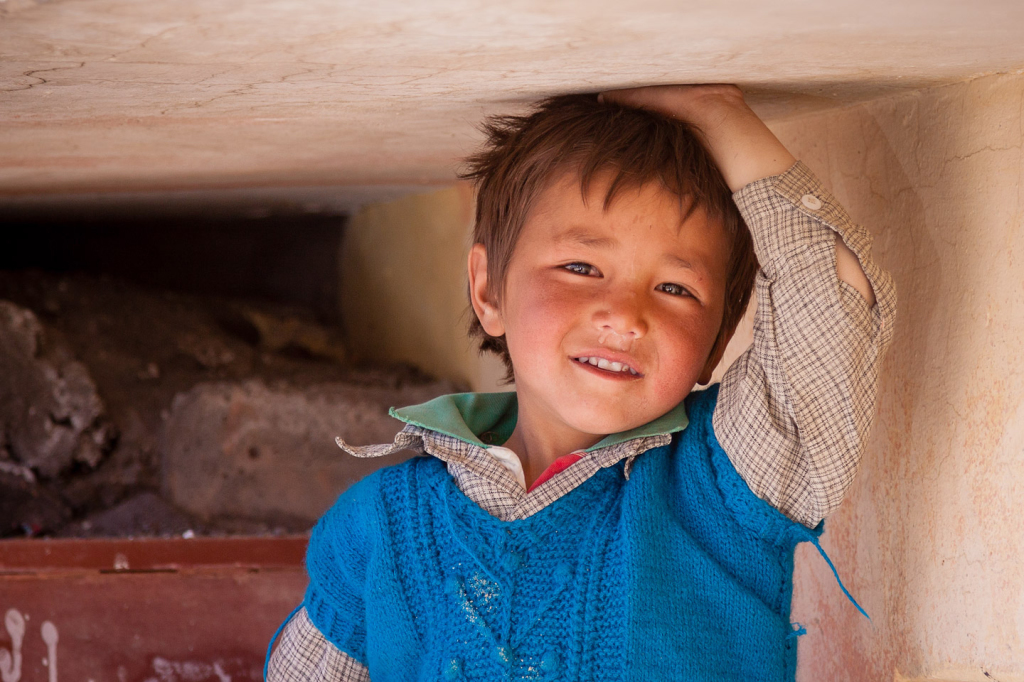
Photo Source
Cheerful, inquisitive and sun-kissed, the local kids interact with friendly gusto with visitors. Time may appear to stand still in these secluded valleys but the carefree laughter of these children is a reminder that nothing is constant, not even the immovable looking shapes of the mountains.
Like this story? Have something to share? Email: [email protected], or join us on Facebook and Twitter (@thebetterindia). To get positive news on WhatsApp, just send ‘Start’ to 090 2900 3600 via WhatsApp.
This story made me
- 97
- 121
- 89
- 167
Tell Us More
We bring stories straight from the heart of India, to inspire millions and create a wave of impact. Our positive movement is growing bigger everyday, and we would love for you to join it.
Please contribute whatever you can, every little penny helps our team in bringing you more stories that support dreams and spread hope.






